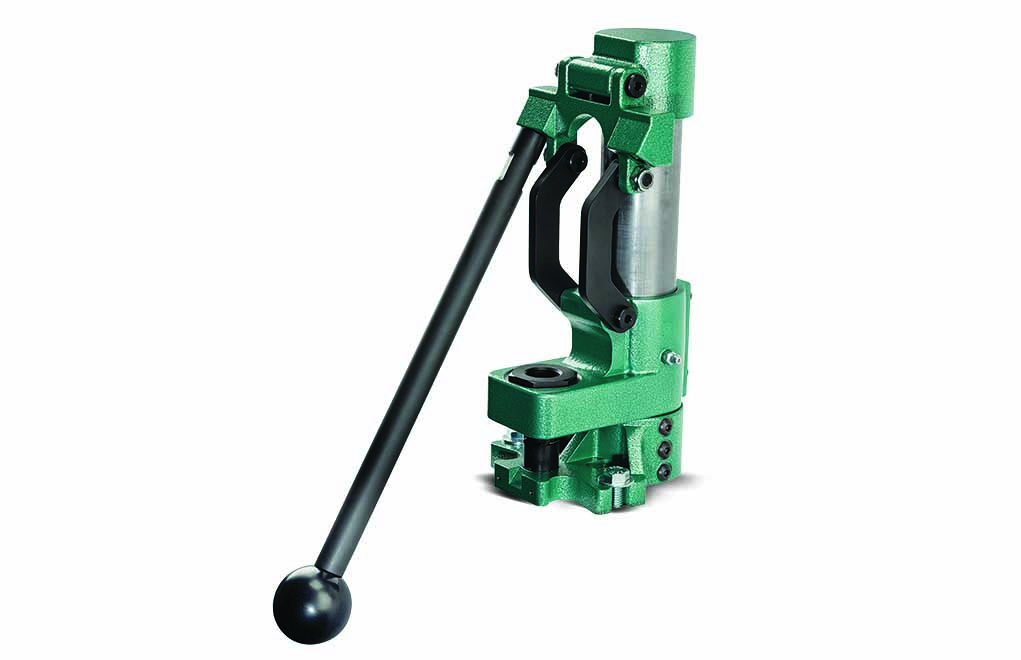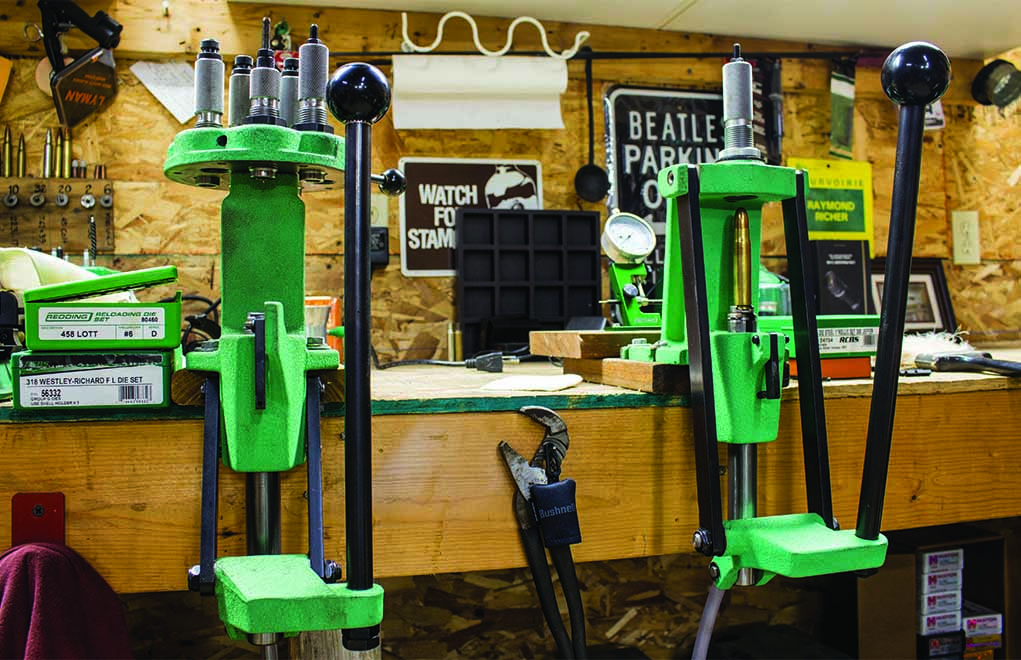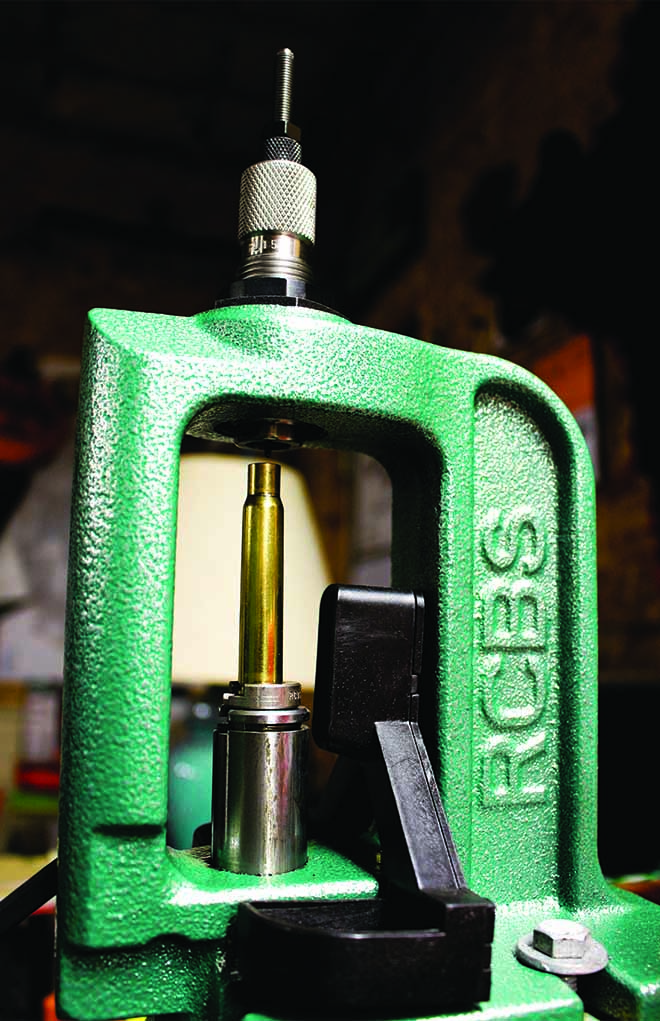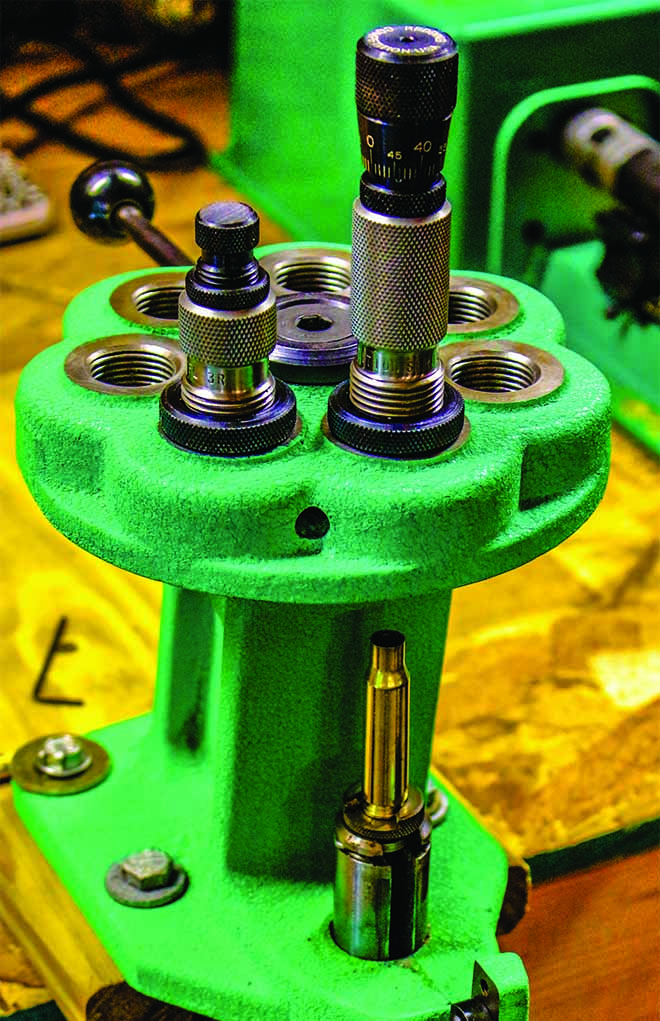

To make the most accurate ammunition possible, consider a reloading press upgrade.
Ah, the reloading press: It’s a simple machine that just sits there and does the basic task we ask of it. We huddle around it and operate it while concentrating on the “more important” parts, such as the dies, cases, projectiles and proper powder charge.
But how much thought do you give your press? Is your model the one that could serve you best? As with so many aspects of reloading, the press has seen improvements—some subtle, some radical.
Single-Stage Presses
Looking at the single-stage presses (because the progressives warrant their own article in a future issue), there are many options that could make your life easier at the bench and have you producing more-accurate ammunition.
In a single-stage press, which performs just one operation at a time, rigidity is the key to uniformity. In the older C-frame press (named so for its overall shape), a bit of flexure will be present on all but the largest designs. C-frame presses have served for decades but have become less popular as of late. Even so, Lyman still offers a C-frame press—the Brass Smith Ideal—with a cast-iron body and a 1-inch steel ram.
O-Frame Presses
More popular—and, in my opinion, more effective—are the O-frame presses, which are as rigid as my high school principal and offer the best value from a traditional press. I like my O-frame to be strong, heavy and even over-designed.

The classic RCBS RockChucker is an O-frame press, as are its offspring, from the RockChucker Supreme to the RC IV. With a press of this style, you can make wonderfully consistent ammunition.
Load Up On Reloading Info:
- The Flexible And Forgiving .30-06 Springfield
- The .45 Colt: A Wheelgun Classic
- .300 Win. Mag.: The Answer To Most Hunting Questions
- Tips For Reloading the .223 Remington
The size of the opening could pose an issue, depending on the length of the cartridges you’re loading for. I prefer a press with a larger opening over one with a smaller opening, because I reload quite a few of the Nitro Express safari cartridges and longer black powder cartridges and need the room for clearance.
The Redding UltraMag press, with an opening of 4¾ inches, gives me what I need, and I can quickly and easily change the nut to accept the 1-inch die bodies of the largest safari cartridges. I love the additional leverage generated from the design, and this is the perfect press for forming cases.
RCBS has seen the wisdom of a larger opening (and a heavier frame) and has incorporated it into its new Rebel, a heavyweight design new for 2020. Perfect for those who load the magnum-length cases, the Rebel is a pleasure when trying to get the long bullets seated on top of a long cartridge case. Primers are ejected out of the bottom of the ram, so simply slide a trash can under the press, and you’re set. This one’s a winner.

Turret Presses
I grew up using a Lee Turret Press. It’s still on Dad’s bench. The movement between the press top and the rotating head is a bit much for my personal tastes these days. Nevertheless, the sheer volume of ammunition that press is responsible for, as well as the knowledge I gained while behind it, has earned that press a special place in my heart.
But among the various turret press designs, one stands head and shoulders above the rest: the Redding T-7. Weighing more than 25 pounds, this beast has a seven-hole (7/8-inch-14 threaded dies only) rotating turret that allows the reloader to set up several dies simultaneously.
While moving parts on the frame are usually a bad thing when we talk about a reloading press, the Redding T-7’s design sees that nothing moves. Turning the turret head to switch between dies, you’ll have to exert some force, and a detent keeps the head firmly in place.
I regularly use my T-7 for everything from .38 Special and .45 ACP all the way up to the big-bore stuff, such as .458 Lott, .404 Jeffery and .375 H&H. This press has become my all-time favorite design. While a good Dillon progressive can crank out pistol ammunition at a higher rate, using a Redding T-7 is much faster than a one-hole, single-stage press.

Unconventional Designs
Nearly all presses have the same basic motion: The case is placed into the shell-holder, and the handle raises the ram, moving the shell-holder and case into one of the various dies.
RCBS abandoned that theory when designing the Summit Press, because the die body moves down to the case. I think of it as a C-frame press that moves where it shouldn’t but has virtually no flexure and makes great ammunition.
Using a 2-inch steel ram, the Summit takes up little room on your bench. Nevertheless, the 4½-inch window allows room for the longest cases, and the die nut can be changed to accommodate the bigger, 1-inch die bodies. I use a Summit regularly, especially for bullet seating, because I can sit the bullet on top of the case with nothing in the way.
The Forster Co-Ax single-stage press uses two parallel rams in a unique design to generate three times the mechanical advantage of other C-style presses. The dies aren’t screwed into a threaded hole; instead, they’re snapped into a recess the shape of the lock ring. Additionally, no shell-holder is used—a set of jaws neatly holds the cartridge case (certain cases with very wide case heads require an adapter). The design results in very consistent alignment and very little effort required to work the ram.
If you have a good single-stage press you feel comfortable with, I’m not going to say that you need to replace it. What I will say is that working the handle a few times on one of the presses discussed here proves how much things have progressed and how tight the tolerances are on modern designs.
The CNC machining on our rifles, pistols, rings and bases have made a dramatic improvement in accuracy, and if you’re trying to make the best ammunition possible, upgrading to one of these presses will likely improve your final product.
Editor's Note: This article originally appeared in the May 2020 issue of Gun Digest the Magazine.

Next Step: Get your FREE Printable Target Pack
Enhance your shooting precision with our 62 MOA Targets, perfect for rifles and handguns. Crafted in collaboration with Storm Tactical for accuracy and versatility.
Subscribe to the Gun Digest email newsletter and get your downloadable target pack sent straight to your inbox. Stay updated with the latest firearms info in the industry.

![Best Concealed Carry Guns In 2025 [Field Tested] Wilson Combat EDC X9S 1](https://gundigest.com/wp-content/uploads/Wilson-Combat-EDC-X9S-1-324x160.jpg)


![Best 9mm Carbine: Affordable PCCs [Tested] Ruger Carbine Shooting](https://gundigest.com/wp-content/uploads/Ruger-Carbine-Shooting-100x70.jpg)
![Best AR-15: Top Options Available Today [Field Tested] Harrington and Richardson PSA XM177E2 feature](https://gundigest.com/wp-content/uploads/Harrington-and-Richardson-PSA-XM177E2-feature-100x70.jpg)

I chose the RCBS Summit presses due to their compact design and because they don’t project beyond or below the edge of the workbench. Work space it at a premium in my new place, so I mounted my two presses side by on a section of commercial 1″ plywood that fits my workbench to maximize the space I have to work with. I also use the optional short handle on the presses because they have more than enough leverage for everything I reload from 22-250 through 375 H&H. On similar sections of plywood I have mounted my MEC 700 shotshell reloaders and it takes just a few minutes to switch modes. I don’t reload large amounts at one time, so I find this to be efficient for me.
So tell me, Philip, how do you reload anything with anything without PRIMERS?
If you have one, I would like to know your magic source for this mildly critical item.
Gene
The answer to that is very simple. Always buy (a lot of) primers and other components, when they are available. I have over 90k primers! Powder and bullets…enough to utilize those primers. I ordered in bulk while shooting PPC, IDPA and other local competitions. I was going thru 15k or more, a year. Now, while shooting considerably less (3k-4K/yr?), I have quite an inventory.